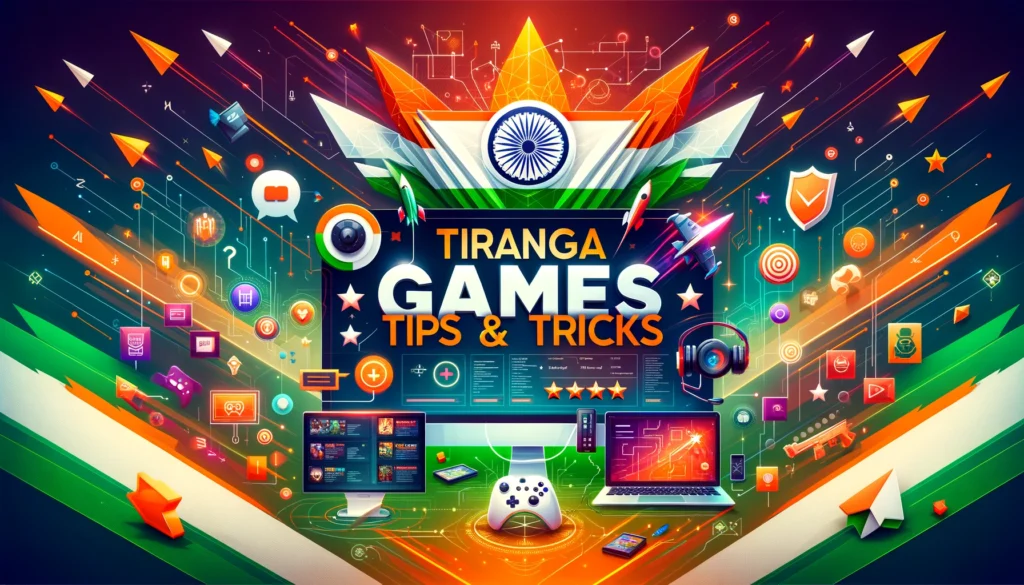Introduction: Celebrating Unity Through the Tiranga GameThe Tiranga, or the Indian national flag, is a powerful symbol of India’s unity, diversity, and pride. It embodies the nation’s ideals and values through its vibrant colors: saffron for courage, white for peace, and green for prosperity, with the Ashoka Chakra symbolizing justice and progress. The Tiranga Game, inspired by these elements, is a creative and engaging way to celebrate India’s spirit while fostering teamwork, knowledge, and patriotism.

The Concept of the Tiranga Game
The Tiranga Game transforms the values represented by the Indian flag into interactive activities and challenges. It’s designed for players of all ages and can be adapted for various settings, from schools and community events to family gatherings and digital platforms. This game is not only entertaining but also educational, emphasizing the principles that make India unique.
How to Play: The Framework of the Tiranga Game
The Tiranga Game is built around the three colors of the flag and the Ashoka Chakra. Each color signifies a theme, and the game’s structure revolves around tasks or challenges linked to these themes.
1. Saffron Round: Courage and Bravery
Players participate in activities that test their knowledge of India’s freedom struggle and highlight acts of bravery.
- Examples:
- Trivia about freedom fighters and significant historical events.
- Role-playing scenarios where players act out courageous moments from history.
- Physical challenges symbolizing the determination and resilience of India’s leaders.
2. White Round: Peace and Unity
This round promotes collaboration, peaceful problem-solving, and harmony.
- Examples:
- Solving puzzles or riddles as a team.
- Creating art or crafts symbolizing national unity.
- Sharing stories or reciting speeches from peace movements led by Indian icons like Mahatma Gandhi.
3. Green Round: Growth and Prosperity
Activities in this round focus on environmental awareness and sustainable practices.
- Examples:
- Planting saplings or identifying plants and their significance to India’s ecosystem.
- Completing tasks related to India’s agricultural heritage or innovations.
- Exploring concepts of economic and social growth through interactive games.
4. Ashoka Chakra Challenge
The final stage involves unlocking the Ashoka Chakra, representing progress and justice. Players must combine the knowledge and skills gained in previous rounds to complete this challenge.
- Examples:
- Assembling a puzzle of the Indian flag.
- Answering rapid-fire questions about India’s history, geography, and culture.
- Performing a task that embodies all three values of the Tiranga.
Types of Tiranga Games
1. Color Hunt Adventure
Participants search for saffron, white, and green items or clues in a designated area. Each find reveals a fact or story about India, culminating in discovering the Ashoka Chakra.
2. Team Relay Tiranga Challenge
Players form teams representing the three colors and complete a series of relay tasks. Each task reflects the values of the color they represent. The team that completes their challenges first and assembles the Tiranga wins.
3. Digital Tiranga Quest
A tech-based version of the game where players navigate a virtual map of India, solving mini-games to collect tokens in saffron, white, and green. The final mission is to unlock the Ashoka Chakra by answering a series of trivia questions.
4. Tiranga Talent Show
Participants showcase performances such as dances, skits, or songs inspired by the Tiranga and its values. This version combines creativity with education and patriotism.
Educational Impact of the Tiranga Game
The Tiranga Game is more than just a fun activity; it’s a platform for learning and growth. Here’s what makes it impactful:
- Patriotism: Players develop a deeper appreciation for India’s history, culture, and ideals.
- Teamwork: The collaborative nature of many challenges fosters unity and mutual respect.
- Cultural Awareness: The game highlights India’s rich traditions, freedom struggle, and diverse achievements.
- Skill Development: Activities encourage critical thinking, problem-solving, and creativity.
Celebrating National Events with the Tiranga Game
The Tiranga Game is ideal for national celebrations like:
- Independence Day: Include the game in school or community events to honor freedom fighters and celebrate independence.
- Republic Day: Emphasize the values of justice and progress through themed challenges.
- Children’s Day: Engage young minds with fun, educational activities centered on the Tiranga.
- Environment Day: Highlight the green round with activities promoting sustainability and environmental protection.
Conclusion: Three Colors, One Nation
The Tiranga Game is a celebration of India’s spirit, values, and unity. By transforming the symbolism of the national flag into an interactive experience, it brings people together to learn, collaborate, and grow. Whether you’re participating in a physical activity, solving puzzles, or embarking on a digital adventure, the Tiranga Game is a unique way to honor the nation’s heritage while having fun.
So, gather your friends, family, or community and dive into this exciting journey. Celebrate the Tiranga, embrace its values, and experience the joy of being part of a united and diverse nation. Three colors, one nation—let the Tiranga Game begin!